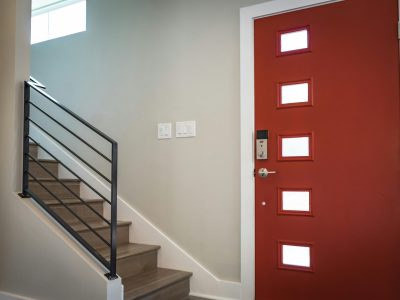A home inspection is an essential part of any real estate transaction. Buyers can understand the condition of a property before buying it. Buyers could be buying a property that is in dire need of major repairs, leading to high costs.
If you currently type on google ” home inspection near me ” its means your home needs inspections. Let’s talk about what a home inspection looks like, how it works, and the cost.
What is a Home Inspection?
A home inspection is an independent assessment of the property and its structure. This is usually requested as part of a real-estate transaction but it can be done at any time.
A homeowner might request a home inspection to check out the condition of their home. We also see sellers asking for pre-listing inspections in order to sell their homes quickly.
The most common scenario is that homebuyers hire licensed inspectors to assess the property’s condition and report on its general condition. They also recommend special contractors if necessary.
What does a Home Inspection include?
A home inspection usually includes an assessment and report on the following items:
- Exterior
- Grading
- Structure
- Roof
- Attic
- Interior
- Plumbing
- Elec.
- HVAC
- Appliances
- Safety issues
The contents of a home inspection may vary from inspector to inspector. However, most inspectors adhere to the American Society of Home Inspectors’ (ASHI) Standards of Practice and the International Association of Certified Home Inspectors’ (NACHI) Standards of Practice.
Waypoint Property Inspection adheres to the NACHI standards. Check out a sample home inspection report.
What is not included?
Home inspections are not code inspections. They are different from other types of inspections. Consult your inspection company to find out exactly what is included and excluded.
The following are the most common charges for home inspectors:
- Pool/Spa Inspections
- Dock/Seawall Inspections
- Mold Testing
- Radon Testing
Most home inspectors do not include:
- Cosmetic Defects
- Except where specifically requested, outbuildings are not permitted.
- Cable Systems, Antennas, & Alarm Systems.
- They cannot safely reach or see the components of their homes.
- Get estimates for repairs
- Any inspection that is not visual, non-invasive or technically exhaustive. A home inspector wouldn’t disassemble an air conditioner, or move personal belongings to reach an electric panel.
We recommend using our home inspection checklist to ensure that you have everything covered. Learn more about the limitations.
How a Home Inspection Works
As we have mentioned, most home inspections take place during a real-estate transaction. We will be focusing on these instances for this post.
A home buyer submits an offer to purchase a home that they find appealing. The homebuyer usually has 5-7 days to complete any inspections once an offer has been accepted. (Depending on market conditions, the inspection period may vary. The home inspection is one of these inspections.
The home buyer will then hire a home inspector who will inspect the property during the inspection period. We recommend speaking with your agent or reading online reviews to find a home inspector.
Sellers typically leave the property during inspection to allow the buyer, inspector and agent to remain alone.
A home inspection takes on average 2-3 hours. After that, the inspector shares his findings with the buyer and their agent. The home inspector will then prepare a report for home buyers. The home inspection report is usually delivered within 24 hours.
The home buyer and the buyer’s agent might be able make repairs requests or open negotiations based upon home inspection findings. This could lead to a home inspector contingency.
Sometimes, it may be necessary to conduct a reinspection to verify that repairs were done correctly. The inspection is completed.
What is the cost?
A basic home inspection costs just over $350 on average. Most home buyers can expect to pay more if they require additional services like radon testing, mold testing, or insurance-specific inspections such as the four point or Wind mitigation inspections.













Comments